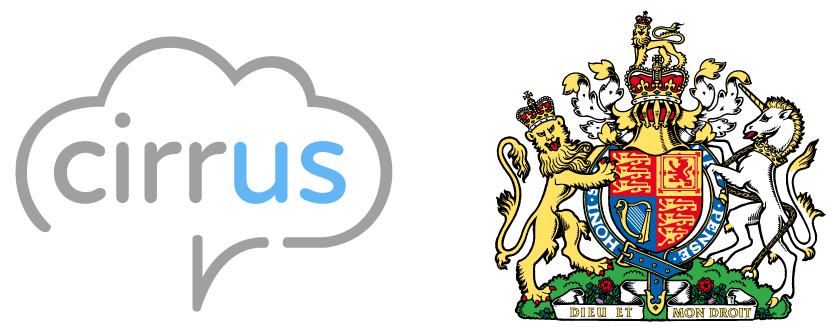Delivering exceptional customer experience (CX) has become a critical differentiator. Recent statistics highlight the significant impact of CX on a company’s bottom line and its ability to forge lasting customer relationships. Consider these insights:
- Companies focusing on CX see an 80% increase in revenue.
- Customer-centric brands report 60% higher profits than those not prioritising CX.
- An impressive 90% of businesses have identified CX as their primary focus.
- Around 73% of customers consider CX the most crucial factor in purchasing decisions.
The role of digital channels, including social media and emerging technologies like the metaverse, is equally important:
- Social media remains a vital customer service channel, with 59% of businesses acknowledging its increased value.
- The omni-channel approach is gaining momentum, with 81% of consumers shopping across at least three channels.
- In the metaverse, 72% of consumers believe it will either replace or supplement real-world brand interactions.
Moreover, the global CX management market is estimated to reach USD $11.4 billion in 2023, signifying the growing investment and focus in this area. Companies that treat customer service as a value centre rather than a cost centre witness 3.5 times more revenue growth.
To thrive in today’s market, companies must acknowledge the importance of CX and actively invest in and innovate their customer experience strategies.
The Concept of CX Pillars
In the context of customer experience (CX), the term “pillars” refers to the foundational elements that collectively support and shape the quality of interactions between a business and its customers. These pillars are not standalone components but are interdependent aspects that, when effectively aligned, create a highly impactful customer experience. Each pillar represents a critical area of focus that businesses must address to ensure they are meeting and exceeding their customers’ evolving expectations.
Together, these pillars form a robust framework for delivering exceptional customer experience. By focusing on and continually refining these areas, businesses can create a CX strategy that meets and exceeds customer expectations, fostering loyalty and driving long-term success.
Pillar One: Customer Engagement and Interaction
This pillar underlines the vital role of effective communication channels in establishing and nurturing customer relationships. At its core, this involves how a business communicates with its customers, the methods it employs, and the effectiveness of these interactions in meeting customer needs.
Significance of Effective Communication Channels
- Building Relationships: Effective communication is key to building lasting customer relationships. It involves not just the exchange of information but also creating a dialogue where feedback is encouraged and valued.
- Channel Diversity: Today’s customers expect to interact with businesses through various channels, including traditional methods like phone and email, as well as digital platforms like social media, live chat, and mobile apps. Each channel serves different customer needs and preferences.
- Consistency Across Channels: Communication and quality across all channels is crucial. Customers should receive the same level of service and information whether they contact a company via social media or call a customer service hotline.
How Technology Facilitates Better Customer Engagement
- Automation and AI: Technologies like chatbots and AI-driven tools can quickly respond to common queries, improving efficiency. However, they should be balanced with human interaction to maintain a personal touch for more complex issues.
- Data Analytics: Technology enables businesses to analyse large volumes of customer interaction data. This analysis can better understand customer needs, preferences, and patterns, allowing for more targeted and personalised communication.
- Omni-channel Solutions: Advanced software solutions enable seamless omni-channel experiences, allowing customers to switch between channels without losing the context of their interaction.
- Real-Time Engagement: Technologies like live chat and instant messaging provide customers with real-time support, significantly enhancing the engagement experience.
- Personalisation Tools: Personalisation is a key aspect of customer engagement. Technology enables businesses to tailor interactions based on customer history, preferences, and past purchases, creating a more relevant and engaging experience.
Pillar Two: Personalisation and Understanding the Customer
This pillar is pivotal in transforming standard customer interactions into memorable, tailored experiences that resonate personally.
Importance of Understanding Customer Needs and Preferences
- Enhanced Customer Satisfaction: Understanding each customer’s unique needs and preferences allows for creating more satisfying and relevant experiences. This understanding fosters a sense of being valued and understood, which can significantly boost customer satisfaction.
- Building Loyalty: Personalised interactions are more likely to lead to customer loyalty. When customers feel that a company understands their specific needs and preferences, they are likelier to return and recommend the company to others.
- Competitive Advantage: Personalisation can be a key differentiator in a marketplace where customers have myriad choices. Companies that excel in understanding and catering to individual customer needs can stand out from competitors.
Strategies for Personalisation in Customer Interactions
- Gathering and Analysing Customer Data: Utilise data analytics to gather insights about customer preferences, purchase history, and behaviour. This information forms the foundation for creating personalised experiences.
- Segmentation: Divide your customer base into smaller segments based on shared characteristics. Tailor your communications and offers to these segments for more effective personalisation.
- Predictive Analysis: Employ predictive analytics to anticipate customer needs based on past interactions and behaviour. This proactive approach can enhance the customer experience by offering relevant solutions and recommendations before the customer articulates a need.
- Customised Recommendations: Use customer data to provide personalised product or service recommendations. This shows you understand the customer’s needs and add value to their shopping experience.
- Personalised Communication: Tailor your communication style and content to match the individual customer. This could mean customising email content, addressing customers by name in communications, or remembering their preferences in future interactions.
- Feedback Loops: Establish mechanisms for regular customer feedback. Use this feedback to refine and improve the personalisation of your services continually.
Pillar Three: Efficiency and Responsiveness
This pillar is critical as it directly impacts customer satisfaction and loyalty. In an age where customers expect quick and easy solutions, the ability of a business to respond promptly and efficiently to customer needs can set it apart in a crowded marketplace.
The Role of Efficiency in Customer Satisfaction
- Reducing Customer Effort: Efficiency in customer service reduces the effort customers need to exert to resolve their issues or questions. Lower customer effort typically leads to higher satisfaction rates.
- Speed of Service: Speed is often equated with efficiency. Fast response times are key to customer satisfaction, as modern customers value their time highly.
- First Contact Resolution: Efficiently resolving customer issues on the first contact without needing follow-ups is a critical component of customer satisfaction. It demonstrates respect for the customer’s time and a commitment to solving their problems effectively.
Techniques to Improve Response Times and Process Optimisation
- Leveraging Technology: Implementing advanced customer service technologies such as AI chatbots, automated ticketing systems, and CRM (Customer Relationship Management) solutions can greatly enhance response times and efficiency.
- Streamlining Processes: Review and streamline customer service processes to eliminate unnecessary steps. This can involve simplifying procedures, reducing paperwork, or automating routine tasks.
- Training and Empowering Employees: Well-trained and empowered employees can make quick decisions, reducing delays in the customer service process. Regular training and providing employees with the necessary tools and authority can significantly improve efficiency.
- Real-Time Feedback Mechanisms: Utilise real-time feedback tools to address customer concerns promptly. This can include live chat support, social media monitoring, and instant feedback options on websites or apps.
- Continuous Monitoring and Improvement: Regularly monitor customer service interactions and processes for areas of delay or inefficiency. Use these insights to make continuous improvements.
- Predictive Customer Service: Anticipate common customer issues and proactively address them before the customer reaches out. This could involve sending preemptive instructions, FAQs, or troubleshooting guides based on their purchase history or service usage.
Pillar Four: Employee Empowerment and Training
The direct correlation between employee satisfaction and customer experience is well-documented, and the role of front-line staff in delivering exceptional service is crucial.
How Employee Satisfaction Impacts Customer Experience
- Reflecting Company Values: Employees who are satisfied and engaged are likelier to embody and reflect the company’s values in their interactions with customers. Their positive attitude and commitment can significantly enhance the customer’s perception of the brand.
- Enhanced Service Quality: Satisfied employees tend to be more motivated and dedicated to their roles, which translates into higher quality service. They are likelier to go the extra mile to resolve customer issues and ensure a positive experience.
- Lower Turnover Rates: High employee satisfaction often leads to lower turnover rates. Consistency in staffing allows for deeper customer relationships and a more profound understanding of customer needs.
The Importance of Training and Empowering Front-Line Staff
- Equipping with Skills and Knowledge: Comprehensive training ensures that employees have the necessary skills and knowledge to handle customer inquiries and issues effectively. This includes product knowledge, problem-solving skills, and an understanding of company policies and procedures.
- Empowerment to Make Decisions: Empowering employees, especially those on the front lines, to make decisions can lead to faster resolution of customer issues. When rigid protocols do not hinder employees and can exercise discretion, they can provide more personalised and effective solutions.
- Fostering a Culture of Service Excellence: Regular training and empowerment initiatives contribute to a culture of service excellence. Employees who feel supported and valued are likelier to deliver superior customer service.
- Feedback and Continuous Improvement: Providing channels for employees to give feedback on customer interactions and service processes can lead to continuous improvements in service delivery.
- Adaptability and Responsiveness: Training programs should also focus on developing adaptability and responsiveness among employees, enabling them to handle diverse customer needs and changing market conditions effectively.
Pillar Five: Continuous Improvement and Innovation
This pillar emphasises the need for businesses to consistently evaluate and adapt their CX strategies to meet evolving customer expectations and market trends. The role of innovation in this process is key, as it drives the evolution of customer experience to new heights.
Emphasis on the Need for Ongoing Evaluation and Adaptation
- Regular Feedback and Analysis: Continuous improvement begins with regular collection and analysis of customer feedback. This feedback is crucial for identifying areas of success and those needing improvement.
- Benchmarking Against Industry Standards: Staying informed about industry trends and standards helps businesses understand where they stand compared to their competitors and identify areas for improvement.
- Adaptive Strategies: Quickly adapting to customer feedback and market changes is essential. This includes revising policies, processes, or business models to meet customer needs.
Role of Innovation in Enhancing Customer Experience
- Leveraging New Technologies: Innovations in technology, like AI, machine learning, and big data analytics, offer new ways to enhance the customer experience, from personalised interactions to improved service delivery.
- Creating Novel Experiences: Innovation is not just about technology; it’s also about thinking creatively to offer new and unique experiences to customers. This can be in the form of unique products, services, or customer engagement methods.
- Developing a Culture of Innovation: Cultivating a culture that encourages innovation within the organisation is critical. This involves encouraging employees to develop new ideas and being open to experimenting.
- Proactive Approach to CX: Instead of reacting to market changes and customer feedback, a proactive approach to innovation anticipates future trends and customer needs, placing the business ahead of the curve.
Integration of Pillars for a Holistic Approach
Integrating the five pillars of customer experience (CX) is essential for a holistic approach to customer service and satisfaction.
How These Pillars Support Each Other
- Seamless Customer Journey: Effective customer engagement and interaction set the stage for a positive customer experience. This is enhanced by personalisation, which tailors the journey to individual customer needs.
- Employee-Customer Synergy: Empowered and well-trained employees are better equipped to deliver personalised services efficiently and responsively. Their satisfaction and competency directly affect their ability to understand and meet customer expectations.
- Feedback Loop: Customer and employee feedback fuels continuous improvement and innovation. This feedback helps refine engagement strategies, personalisation tactics, and the efficiency of responses.
- Technological Integration: Leveraging technology in one pillar (like using AI for better customer engagement) can have ripple effects on others (like improving efficiency and enabling personalised experiences).
Examples of Successful Integration in Businesses
- Retail Sector: Many retail companies integrate these pillars by using customer data to personalise shopping experiences while training employees to use this data effectively. They continually adapt their strategies based on customer feedback and market trends, employing new technologies to enhance the shopping experience.
- Service Industry: Companies in the service sector, like hospitality or airlines, often excel in integrating these pillars by focusing on personalised customer service, responsive feedback mechanisms, and continuously training staff to adapt to new service standards and technologies.
- Technology Companies: Tech companies often lead in integrating these pillars by continuously innovating their product offerings based on user feedback, personalising user experiences, and ensuring their support teams are well-trained and equipped to handle complex customer queries efficiently.
The customer testimonials on Cirrus’ website showcase how we effectively integrate the pillars of exceptional customer experience (CX) in its services. These case studies demonstrate Cirrus’ commitment to efficiency, responsiveness, and innovation in meeting client needs. For example, Bradford University highlights Cirrus’ rapid implementation and enhanced agent productivity. Nisbets emphasises improved sales and customer service through Cirrus’ omni-channel system and workforce management solutions. These examples reflect Cirrus’ ability to adapt and respond to diverse customer requirements, underlining the successful application of the CX pillars in a contact centre.
Conclusion
This analysis of the five pillars of customer experience (CX) highlights their integral role in shaping a successful CX strategy. Considering how each is currently integrated into your customer service approach is important. The key takeaway is the interconnectedness of these pillars and their collective impact on customer satisfaction and loyalty. Businesses must continuously evaluate and enhance their CX strategies, drawing inspiration from successful case studies and adapting to the ever-evolving landscape of customer expectations and technological advancements. This proactive approach to CX is crucial for businesses thriving in today’s competitive environment.




